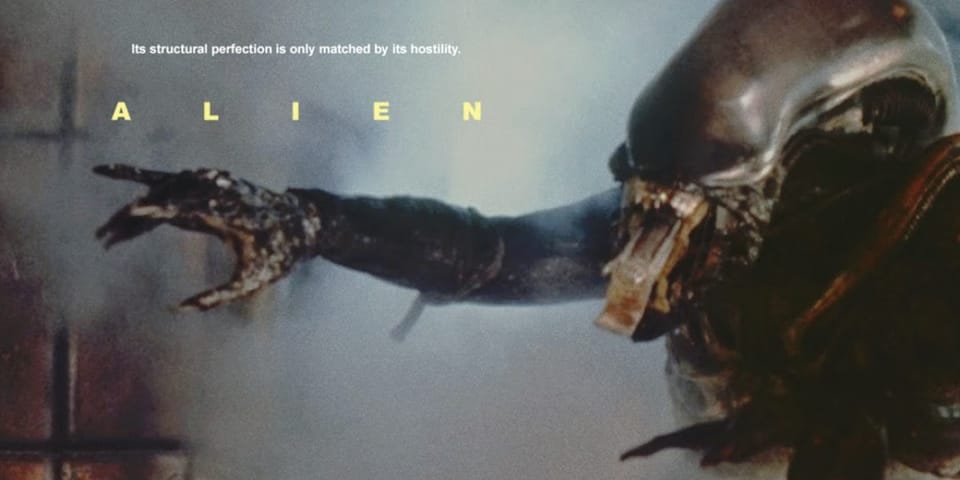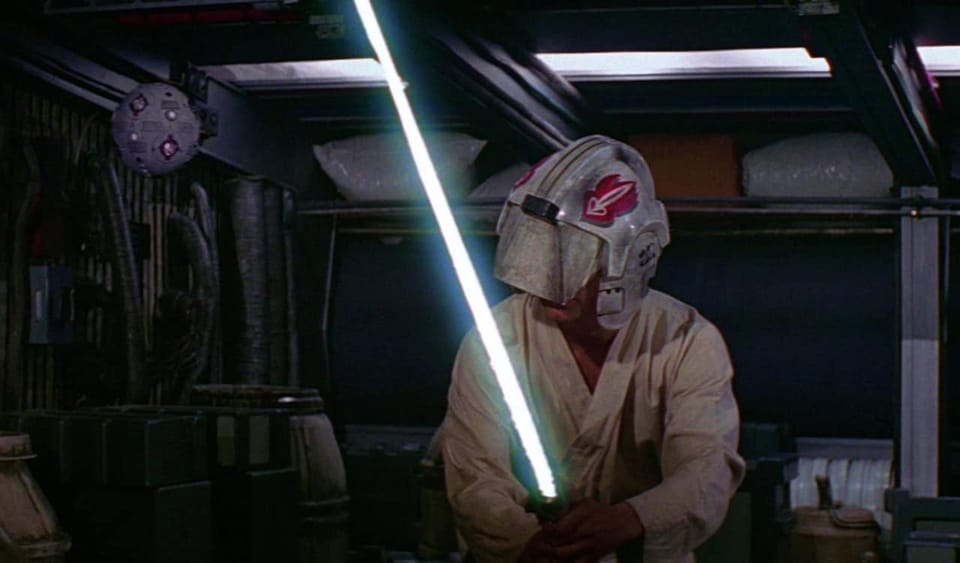Five Phases of Feature Development
I left my last agents at Paradigm over a disagreement about two spec scripts. I liked them. They didn't.

The Story and Plot Weekly Email is published every Tuesday morning.
I left my last agents at Paradigm over a disagreement about two spec scripts.
I liked them. They didn't.
I followed their lead on the first one because I was less confident about where I was in my career.
But I loved that second spec and knew it was some of my best work. When they weren't willing to get behind it, it was clear the relationship had run its course.
It was scary. I didn't have other reps lined up. I fired my manager a year earlier, meaning I would have no reps!
But soon after, a manager contacted me, and I showed her the two specs. We decided to work together, and she slipped the projects to agents and soon I was repped by Gersh (my sixth agency in 27 years).
We later sold both those spec scripts outright.
But this is not an "agents are always wrong" story.
Earlier in my career, I left CAA and ICM over similar circumstances, and in both cases, my agents were correct about those projects. But they were also wrong about other projects!
So, the real point is that people will disagree, and no one always makes the right call.
But it was emotionally grueling each time I shelved a script or decided to leave my agent. I hated it. I credit laziness and insecurity for why it took nearly two decades to devise a process to avoid that pain, but I finally did.
The Process Now
While I use this process with my agents, you can quickly adapt it for your own needs if you're unrepped.
Use a writer's group, online friends, or creative allies. The more they know about the business, the better, but don't discount civilians in the logline phase. They can be pretty revealing there.
The process goes something like this:
- Logline/Pre-Outline
- Outline
- Treatment
- Screenplay
- Rewrites
The Logline Phase
I send my reps five or six loglines. You undoubtedly know by now how much emphasis I put on the logline. I didn't always, and I kick myself for it. So dumb. A great logline makes everything easier. Embrace the power of the logline!
This logline phase is crucial on many fronts. The reps are looking at what they can sell, and we discuss why or why not. This helps with misunderstandings about the hook or the storyline. If a logline lacks clarity, it also should pop up here.
I had one time where they didn't like any of the loglines I sent them, but we can usually find one we all agree on.
The Outline Phase
Getting to the logline is unpredictable. It can come instantly or take years before the idea becomes a story. But once it's done, I have a system refined over decades to push this project forward.
I outline for myself. I am the only one who is going to look at it.
This is where I figure out the story's structure, identify the great scenes and sequences, and ensure it has a landing that sticks. I will do a lot of brainstorming here, do any necessary research, and make the big decisions up front that make all the later decisions so much easier.
(This whole process is taught in the Idea To Outline course, which shows you how to take the most raw idea, develop a logline out of it, and then turn that into a scene-by-scene treatment.)
I still use index cards on a corkboard so I can sit back and look at the whole. For some reason, I think better that way. Maybe it just operates as a trigger for me.
The scene description of the index cards would mean nothing to anyone else. For example, it might say "Cutter and Hollis show up at house" on the card. I know I want a high-tension scene, but no one else would know that.
I might have a few dark spots that I haven't quite figured out yet, but for the most part, this is where the construction happens.
The Treatment
I then translate that outline into a readable narrative for an audience (in this case, my manager and agents.)
This is an incredibly powerful step. Like so much of what I have learned over the years, I wish I had embraced it earlier.
The treatment is writing. You are problem-solving. You may be punting on how to execute a few things, but you are definitely mapping out and selling the emotion.
I am in storytelling mode here, so I am inevitably discovering more about the characters, the story, the tension, and the emotion. This is where I put the narrative together and have a movie.
Because the treatment is meant for a reader, I am now selling the emotion of a feature film. That index card that reads "Cutter and Hollis show up at house", will read in the treatment as...
The next morning. Sara sees a man through the backyard window. His name is HOLLIS. He's tall, powerful. Physically intimidating. He knows it, and he enjoys it. Sara watches him outside and follows from window to window. All the way to the front door. But the doorbell never rings. She waits and waits. The longest silence. But still no knock.She doesn't realize there is now a man behind her. His name is CUTTER. He's not as physically imposing as Hollis, but there's something in those eyes. There's not an evil in this world that he would lose sleep over.Cutter and Hollis are now in Sara’s house. Cutter does most of the talking. They are looking for Colin. They have a business arrangement with him. He owes them money. They want it. If he has skipped town they will get it from her and there is no doubt these men could do whatever they wanted to Sara and nothing could stop them.
All that from an index card that said, "Cutter and Hollis show up at house."
When I finish the treatment, I polish it and send it to the reps.
The first round of notes!
My reps are good at giving me a unified response. Traditionally, managers have more notes than agents, but because my process is pretty polished, I usually only get a few notes from either.
Writing The Screenplay
Now I go to script. Regarding my interaction with my team, this is not terribly different from a studio, producer, or any development team—pitch, outline, commencement.
There is still plenty of discovery when writing the screenplay. I'll find scenes that need to be more compelling, characters that don't necessarily pop, and areas that need to deliver more emotion. You've got to figure all of that out.
I will also have entirely new ideas that I did not expect. What's terrific about knowing the story and having an outline is that you'll be able to ascertain whether these new ideas help you or not. Years ago, I would get caught up with shiny new things that would lead me down rabbit holes. That doesn't happen anymore.
The outline to screenplay phase allows me to be flexible in discovery and keeps me on story and productive. This has made a huge difference in my writing.
If you want to see how the "Cutter and Hollis show up at house" index card finally turned out in the screenplay, CLICK HERE.
The Rewrite
Again, this whole process is pretty refined, so I am not just doing all that many rewrites. Someone would have caught any major flaws much earlier, and because I am disciplined about what story I am telling, there isn't that, "Maybe it should be this..." kind of debate.
When I turn this in, everyone is pretty happy.
Why jump through the hoops?
Most reps want you to check in with them about the logline before writing a spec screenplay. That's normal. They don't want you wasting your time any more than you do. But I like to go the extra mile with this process for three reasons:
- I want my representation to feel like this is their project, too. I want their buy-in. They've been with me every step of the way. If we hit speed bumps or get early passes, they are far more likely to stay committed if they feel connected to the project.
- I substantially lower the chances of me having to decide to shelve the project or, in the absolutely worst-case scenario, shelve my reps. I am really happy with my team now! I want those days behind me.
- I have found this to be the most consistent process for creating polished screenplays. The prep work is heavier, but it dramatically shrinks the time between the idea and the distributable first draft. I will never go back, and I strongly encourage you to adopt something similar that works for you.
1-on-1 Coaching
I dedicate Fridays to 1:1 coaching. This includes one screenplay consultation a week and several one-hour coaching sessions.
The 1-on-1 Coaching is probably my favorite thing I do. It's personal, direct, and focused. We usually work on revising an outline or breaking a story, but we can also hammer down a logline or just talk about career or project strategy.
One of the benefits of only doing a few of these a week is that it allows my full attention. I'm not trying to churn clients here, so it's a pretty relaxed vibe, and we get the job done.
My one definite recommendation is that you have a set goal going in. If prepped for it, we can turn an entire project around in an hour. Know what you want to achieve.
Click here to learn more about 1:1 Coaching.
That's it for this week!
Thanks for subscribing. I'm thrilled you're here. And I am so grateful I get to do this.
Seriously. Thank you.
And let's get back to work!
I hope so much you get to do what you love.
In solidarity,
Tom
The Story and Plot Weekly Email is published every Tuesday morning. Don't miss another one.
When you're ready, these are ways I can help you:
WORK WITH ME 1:1
1-on-1 Coaching | Screenplay Consultation
TAKE A COURSE
Mastering Structure | Idea To Outline




